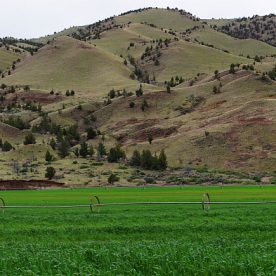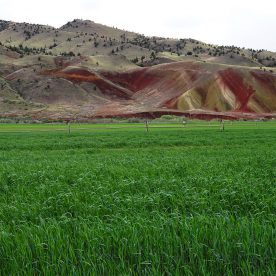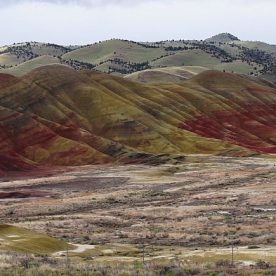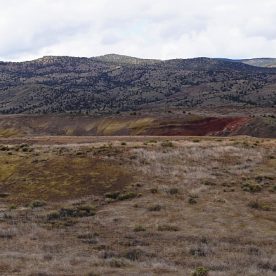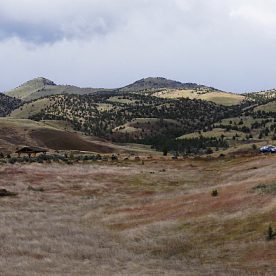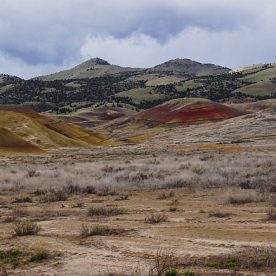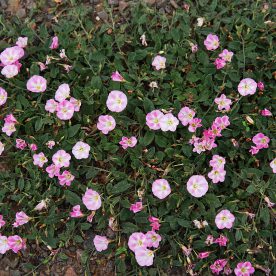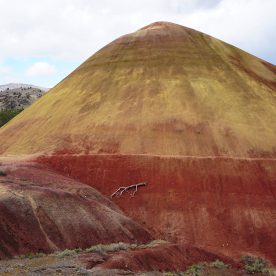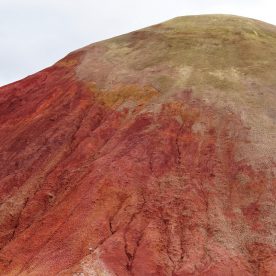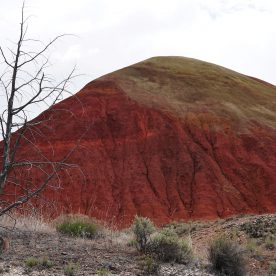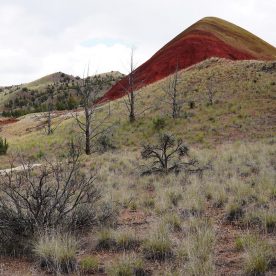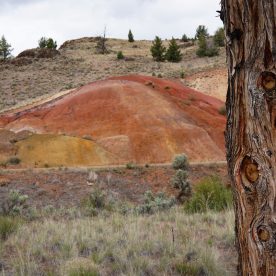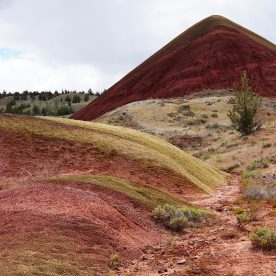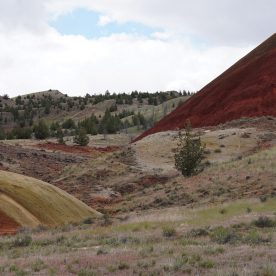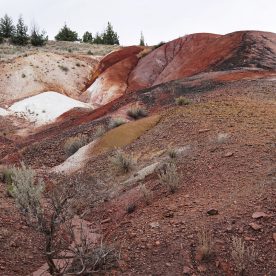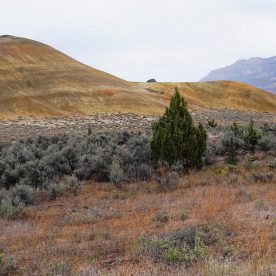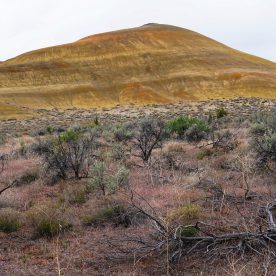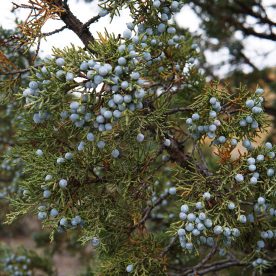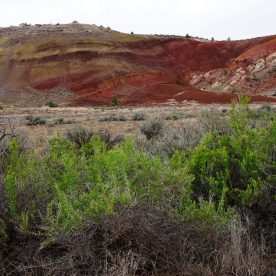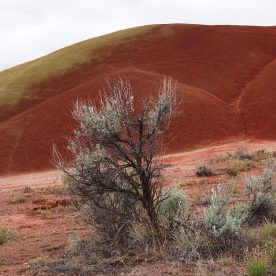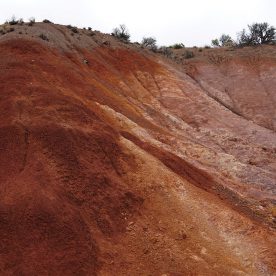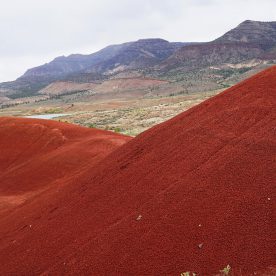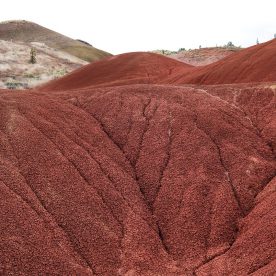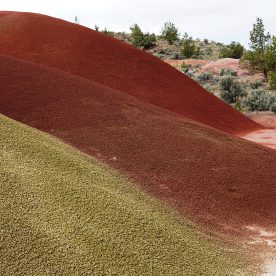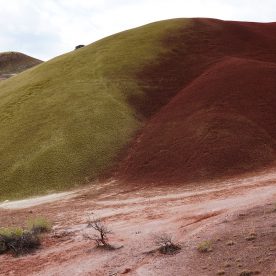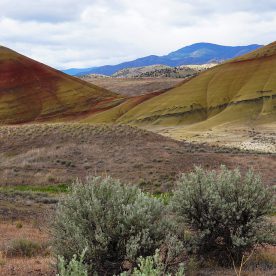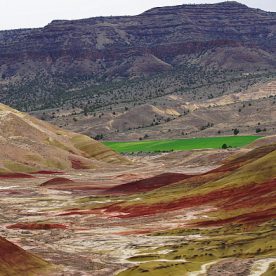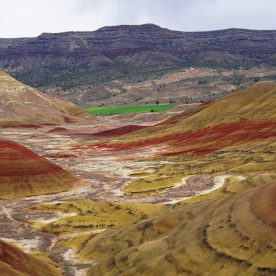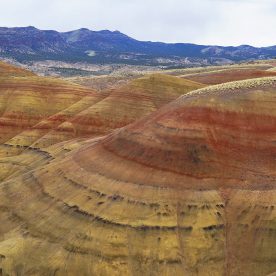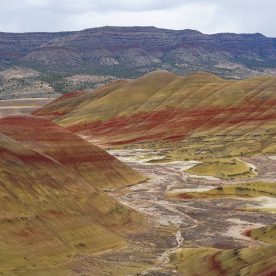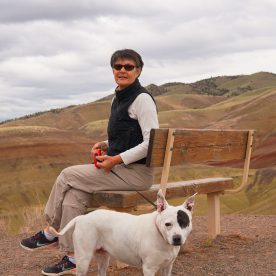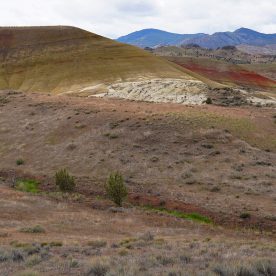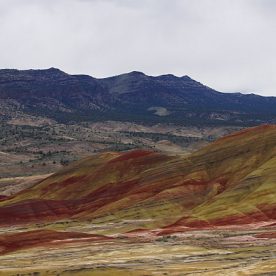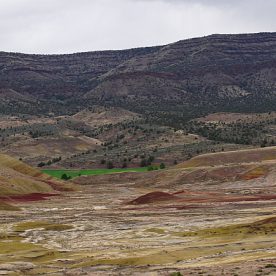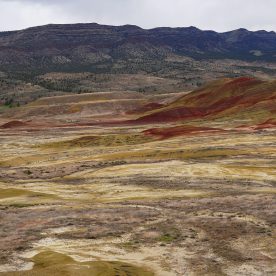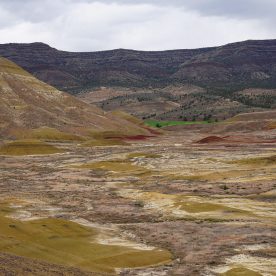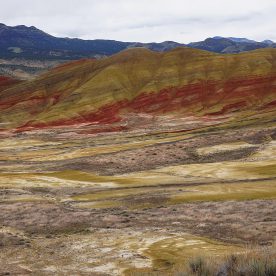We tried to sneak in the park with our friends two weeks ago with partial success. It was closed due to COVID-19, and we just scratched the suburbs. Main road was watched by rangers. Now it is open, and we so glad taking time to come here again.
The hills get their name from the delicately colored stratification in the soil and the yellows, golds, blacks and reds of the Painted Hills are best seen in the late afternoon. Tones and hue may appear to change from one visit to another, as the clay-stones differ with ever-changing light and moisture levels. Once you see them for yourself, it’s pretty easy to understand why the Painted Hills are one of the 7 Wonders of Oregon.
The Painted Hills are one of the three units that comprise the John Day Fossil Beds. We also visited Clarno Unit, with Mars-like pillars formed by waterfalls and volcanic sludge, and the Blue Basin. I will add them on to website shortly.
The Hills’ colors originate from 35 million years ago, when this area was an ancient river floodplain. The colored bands are due to changes in climate that occurred as they were distributed through time. As the climate changed to a more tropical setting with distinct wet and dry seasons produced the reddish and yellowish layers that are made up of laterites, soils rich in iron and aluminum. Red soils come from a more tropical period, while the yellows are from a drier and cooler time. The red coloring is laterite soil that formed by floodplain deposits when the area was warm and humid. The darker, black soil is lignite that was vegetative matter that grew along the floodplain. The grey coloring is sandstone, silt-stone, and shale.
